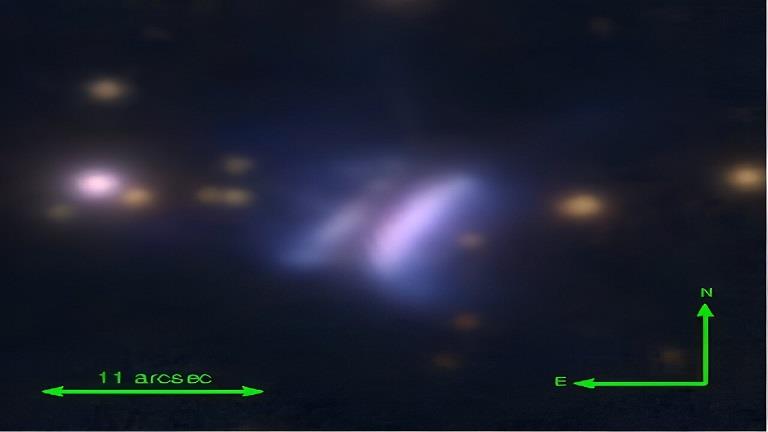Dracula Cevito is a small star surrounded by a thick disk of dust and gas. When viewed from the edge, the arrangement looks like a sandwich.
A similar object was previously observed in a galaxy-milky way. In 1985, it was called “Hamburger Gomez,” and it was later identified in 2008 as a small star about 900 light-years away, according to a Science Alert magazine report.
Dracula Civitto is remarkably similar to Hamburger Gomez, at a similar distance, about 980 light-years or so. It is similarly oriented, so that the disk of dust and gas cuts through the starlight like the filling of two sandwiches, giving us a very different view of the star formation process than we normally see.
Although the two objects are rare, they could represent a class of newborn stars about which we know very little. This is because neither Chivito Dracula nor Hamburger Gomez appear in the typical environment of young stars known as stellar nurseries, which are rich in the material from which new stars are formed. Instead, both stars appear to be floating in relatively empty space, with little clue as to how they were born.
We know a little about the process of star birth based on a growing number of radio observations. Each begins its life as a dense mass in a cloud of molecular gas that collapses under its own gravity, forming the seed of a small star. As the protostar rotates, it grows, and material in the cloud surrounding it organizes into a rotating disk, fueling the star's growth.
Here's what we know about Cevito's Dracula: Bergia and his colleagues determined that the central star is likely a hot Herbig A star, burning at temperatures of about 7,727 degrees Celsius. The disk extends over about 1,650 astronomical units in radius (i.e., 1,650 times the distance from Earth to the Sun) and contains matter with a mass of about 0.2 Suns.
This is fairly close to the characteristics of Hamburger Gomez, but Chivito's Dracula has something extra: two protruding strands of "buns" that researchers liken to fangs (that's the Dracula part). After modeling star formation, the researchers concluded that these filaments indicate a dispersed envelope around the star.
This vanishing bubble of material can help scientists determine how far along a star is in its formation process, as young stars tend to emit strong winds and jets that expel excess material around them. The presence of a thin envelope indicates that the star is still very young.
This discovery represents a new opportunity to study the vertical structure of the star formation process, but it also suggests that, although rare, isolated young stars may be more common than we thought. However, there are still many questions about how they got to where they are, alone in the darkness of space.



0 Comments